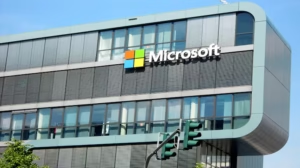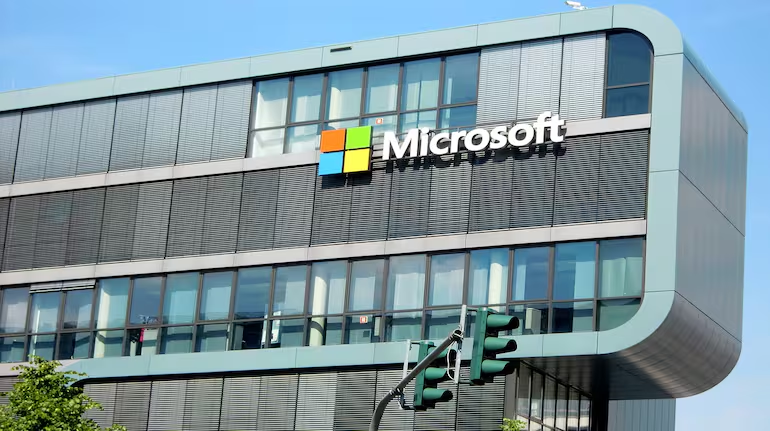 Microsoft Cuts Nearly 9,000 Jobs in Second Major Round of Layoffs: What It Means for the Tech Industry
Microsoft Cuts Nearly 9,000 Jobs in Second Major Round of Layoffs: What It Means for the Tech Industry
Microsoft Cuts Nearly 9,000 Jobs in Second Major Round of Layoffs: What It Means for the Tech Industry
In a significant move shaking up the global tech industry, Microsoft has announced another round of mass layoffs, cutting nearly 9,000 employees across various departments. This marks the second major workforce reduction by the tech giant in recent times and has raised both concern and speculation about the direction of not just Microsoft, but the broader technology landscape.
The Layoff Details: A Closer Look
According to internal sources and media reports, Microsoft’s latest layoffs have primarily impacted employees in its Azure cloud services, HoloLens, gaming divisions including Xbox, and other corporate departments. This round follows a previous layoff of around 10,000 employees announced in early 2023.
While exact departmental breakdowns haven’t been made public, several insiders have indicated that these layoffs are not confined to underperforming teams. Instead, they reflect Microsoft’s strategic pivot and cost-cutting initiatives aimed at maintaining profitability in a volatile economic climate.
Why Is Microsoft Downsizing Again?
Microsoft’s latest workforce reduction seems to be driven by multiple factors:
-
Economic Pressure: Inflation, rising interest rates, and global economic uncertainty have prompted many tech companies to tighten their belts. Despite strong revenue reports, Microsoft is no exception.
-
AI Restructuring: Microsoft has invested billions into artificial intelligence (AI), especially its partnership with OpenAI and integrations with products like Copilot in Microsoft 365. This has shifted internal priorities and workforce needs.
-
Cloud Market Challenges: Azure, Microsoft’s cloud computing platform, is facing stiff competition from AWS and Google Cloud. While still growing, the pace has slowed, prompting internal re-evaluations of investments.
-
Post-Pandemic Correction: Like many tech firms, Microsoft went on a hiring spree during the pandemic to meet surging digital demand. Now, with that demand stabilizing, companies are scaling back to sustainable levels.
Employee Impact: What’s Next?
The layoffs have affected a wide spectrum of roles — from entry-level engineers to senior managers. Severance packages reportedly include salary continuation, health care benefits, and job placement support. However, the emotional and professional toll on the workforce is significant.
Employees have taken to LinkedIn and other platforms to share their experiences. Many have expressed shock and disappointment, especially those who had been part of key growth areas like AI, mixed reality, and gaming.
How This Affects Microsoft’s Strategy
Despite the layoffs, Microsoft has reaffirmed its commitment to long-term growth, especially in AI, cloud infrastructure, and enterprise solutions. CEO Satya Nadella has emphasized that these strategic shifts are necessary for future innovation.
Interestingly, while Microsoft trims its workforce, it continues to invest heavily in AI startups, infrastructure, and partnerships — including expanding data centers and acquiring talent in AI and cybersecurity.
This dichotomy — cutting jobs while investing elsewhere — suggests a recalibration, not a retreat.
Ripple Effects in the Tech World
Microsoft’s move is not isolated. Other major tech firms like Google, Amazon, Meta, and Salesforce have also announced significant layoffs in the past year. This trend reflects a broader reset in the tech industry, where growth is no longer fueled by unchecked hiring but by lean, strategic operations.
The layoffs signal to investors that even the most powerful tech firms are not immune to economic cycles. At the same time, they raise concerns among workers about job security and long-term career prospects in big tech.
Investor Reactions and Market Outlook
Interestingly, Microsoft’s stock remained relatively stable following the announcement, with some analysts even viewing the layoffs as a sign of fiscal discipline. Investors tend to favor cost-cutting during uncertain times, and Microsoft’s continued earnings strength has helped cushion the news.
Market analysts believe that these layoffs, while painful, may be necessary for Microsoft to remain competitive in high-growth areas like AI, cloud, and cybersecurity.
The Human Side of Layoffs
Beyond numbers and strategies, it’s important to acknowledge the personal impact. Thousands of employees now face job searches in a competitive tech market. While demand remains high for tech talent, especially in AI and cloud computing, navigating sudden unemployment is never easy.
Support groups, job networks, and mental health resources have become critical tools for laid-off employees. Microsoft has encouraged affected employees to use these resources and has also partnered with several hiring platforms to facilitate job transitions.
Conclusion: A Tech Giant at a Crossroads
Microsoft’s decision to cut nearly 9,000 jobs is more than just a cost-saving move — it reflects deeper changes in how tech giants operate in today’s world. As the industry shifts towards automation, AI, and efficient operations, workforce dynamics will continue to evolve.
For employees, this is a reminder of the importance of adaptability, upskilling, and preparing for a rapidly changing job landscape. For Microsoft, the coming months will be critical in proving whether its strategic bets will pay off without compromising employee morale and innovation.
As tech layoffs become an unfortunate norm, it’s more important than ever to watch how companies handle them — with compassion, transparency, and a focus on the future.



